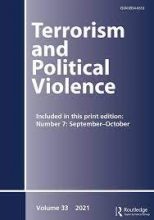Online radicalisation to terrorism has become a pervasive policy concern over the last decade. However, as a concept it lacks clarity and empirical support. In this article, we add an empirical and theoretical lens to this problem by analysing the trajectories of 231 Islamic State terrorists. We use cluster analyses to create typologies of individuals’ different online and offline antecedent behaviours, including the ways in which they engaged in networks with co-ideologues and how they prepared for their events. The findings suggest four types of pathway within our dataset: 1) The “Integrated” pathway which has high network engagement both online and offline, mostly made up of individuals that plotted as part of a group; 2) The “Encouraged” pathway contains individuals that acted more in the online domain at the expense of offline; 3) Terrorists in the “Isolated” pathway are defined by a lack of interaction across either domain; 4) The “Enclosed” pathway encompassed actors that displayed greater offline network activity, but still utilised the Internet for planning their activity. These typologies help to move beyond the dichotomy of online or offline radicalisation; there remain few individuals that either exclusively use the Internet or do not use it at all. Rather, we can conceptualise Internet usage on a spectrum in which these four typologies all sit.
